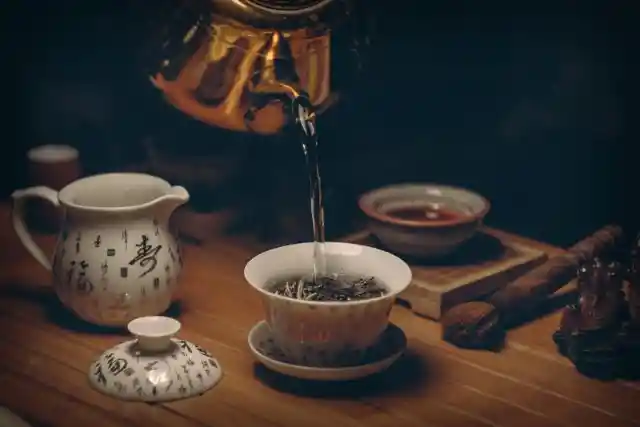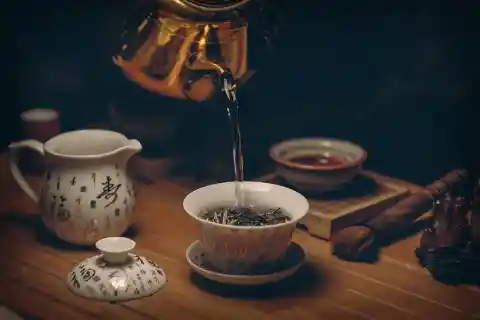Tea Around The World
Tea drinking is a custom that dates back to 2737 BCE. According to folklore, Chinese Emperor Shennong discovered it when a dried leaf from a plant fell into his cup and did wonders to the hot water. Over the years, a range of tea processing techniques and tea varieties have emerged that are now distinct and exotic to their region of origin. Tea is now consumed on a daily basis in most families worldwide, and it has found its way into our hearts. Here's a short rundown of some of the world's tea traditions.


1. China Although the Chinese were the first to use the tea leaf, the early Chinese tea drinkers used it for a completely different reason. Tea was taken as a medicinal as well as a health preventive beverage. Green tea is still given for a variety of ailments in modern-day China. Tea was also used to help people meditate. Tea is ingrained in Chinese culture in almost every element of life. When a couple is getting married, the pair serves tea to their parents as a symbolic way of saying thank you.
2. India India is both the largest producer and consumer of tea in the world. The milky sweet chai is almost a national drink. While tea is an important component of Indian culture, it has never grown into sophisticated ceremonies in China or Japan. Chai wallahs make black tea with milk, sugar, and spices like cardamom, fennel, cinnamon, and cloves in tea shops strewn over Indian streets.
3. Morocco Touareg tea (also known as Maghrebi mint tea) is a traditional North African mixture made with mint, green tea leaves, and a substantial amount of sugar. It's served three times to guests, poured from above into slender, delicate cups. The flavor changes somewhat each time. "The first glass is as mild as life, the second is as powerful as love, and the third is as bitter as death," says the saying. Refusing any of these meals is considered quite impolite.
4. Japan Perhaps no other culture on the planet appreciates rituals as much as the Japanese. The full moon, the first blooms of spring, the shifting of the leaves from green to gold—these are all occasions for celebration and commemoration. So it's no surprise that sipping a cup of tea is treated with the same formality and elegance. The type of drinking cup, the palate, and the season are all carefully studied. The combination of bitter and sweet flavors creates a sense of harmony. But, beyond the flawless visual experience, the tea ceremony is something much more valuable: a moment in time when everything slows down and all you can think of is the sharp taste of the frothy green tea on your tongue.
5. England Many people identify the British with the popularity of tea in the new world when they think of a cup of tea. Although tea was just introduced to England in the early 1600s, the country has embraced it and made it a household ritual. Tea was formerly reserved for the privileged. Cost and availability limited the supply, and due to these factors, aristocratic males had the most access to it. Anna, the 7th Duchess of Bedford, was the first to initiate the 'Afternoon Tea' ritual. Every day, by late afternoon, the Duchess was exhausted. She began drinking tea with a little snack as a remedy. She began inviting her friends to the sessions soon after. This is how afternoon high tea came to reality.
6. Thailand Thai tea, also known as Thai iced tea, is a simple yet satisfying cold beverage that is offered alongside food in all Thai restaurants. This tea is prepared using strong-brewed Ceylon tea and occasionally crushed tamarind, as well as yellow and red food coloring. The tea is sweetened with sugar, then immediately before serving, condensed milk is poured over the top. Thai tea comes in many different varieties, all of which are delicious.
7. Russia Tea arrived in Russia through the Silk Road in the 17th century, but it wasn't until the 1800s that it became commonly available. The samovar is now synonymous with Russian tea, or zavarka. A tall urn used to boil water stands atop a teapot filled with zavarka, a very concentrated black tea. Small quantities of tea are placed into glasses and then diluted with samovar water. Lemon, sugar, honey, or other herbs can be used to flavor it. Tea and hospitality are tightly linked in Russia, just as they are in Morocco. When a visitor enters your home, it is still considered courteous to offer them a cup.
8. Arab Arabic tea is regarded as a welcoming beverage for visitors, relatives, and friends. While there are many different types of tea in Arab nations, they are all served hot with a choice of fresh herbs. Sage is a traditional Arabic tea made with dried sage leaves and honey that is offered after a meal. Many other Arabic teas, such as chamomile, anise, thyme, and cardamom, are prepared with the same care and attention to detail and are regarded as a joy.
9. Tibet While most people don't relate butter with tea, the high-fat, energy-boosting tradition of butter tea, or Po cha, originated in the Himalayas' high, freezing heights. The tea is produced with pu-erh tea cakes that are crushed into hot water and cooked for several hours to keep you warm and cleanse your body.
10. Iran Iranians did not begin cultivating their own black tea until the twentieth century when it became a widely accepted beverage that now welcomes visitors and is an important part of social life. The drink is traditionally served on a silver platter and is accompanied by nabat, a brilliant yellow rock candy. The presence of tea in Iranians' life is so pervasive that the kettle will be left on a stove flame all day. The tea is really powerful. Instead of adding sugar to alleviate the bitterness, insert a sugar cube between your front teeth and suck the powerful brew through it.